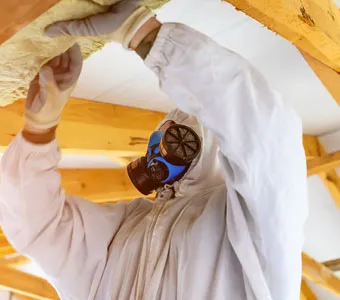North Carolina Navy Veterans Mesothelioma Lawyer
North Carolina Navy Veterans Mesothelioma & Asbestos Exposure Attorney
When the brave men and women of the U.S. Navy signed up to put their lives on the line, mesothelioma was not part of the bargain.
Wallace & Graham, P.A. represents Navy veterans in states across the nation who are disabled or dying from mesothelioma, asbestosis or lung cancer from asbestos exposure during their service years. If one of our mesothelioma attorneys is not licensed in your state, we can associate with local counsel to provide critical knowledge and guidance for your mesothelioma claim.
Mesothelioma Diagnosis and Treatment: Full Speed Ahead:
Mesothelioma is a major focus of our practice. We know the urgency of a proper diagnosis and timely treatment. We work quickly to get clients service-rated for VA disability benefits. We waste no time in tracing the corporations responsible for putting Navy personnel in direct contact with deadly asbestos.
Contact us immediately if you or your family member has symptoms of asbestos disease and served in the U.S. Navy, U.S. Coast Guard, U.S. Marines or Merchant Marine. We also represent citizens of other countries exposed aboard decommissioned Navy vessels sold for civilian uses.
Our top priority is connecting clients to new treatments that can extend life by months — maybe years — or make life as comfortable as possible in the painful end stages of asbestos-related cancer or lung disease.
In Harm’s Way: Navy Asbestos Exposure
Our clients have included Seabees, shipbuilders and longshoremen; the engineers and mechanics who kept naval ships running; and enlisted men and officers exposed simply by sleeping inches from asbestos-coated pipes. They served their country unaware of the dangers, but the Navy brass knew and the manufacturers of asbestos-infused equipment knew.
Exposed to asbestos at a civilian job after your Navy stint? We explore all your legal remedies.
Wallace & Graham, P.A. is based in North Carolina, pursuing justice for Navy veterans throughout the United States. Call 800-849-5291 for a free case evaluation with proven and compassionate lawyers.
Diagnosis and Treatment of Asbestos Disease and Mesothelioma
The average life expectancy from diagnosis of mesothelioma is just 18 months. With advances in medical treatment, those diagnosed with mesothelioma at an early stage are living longer, with less pain. For later diagnosis, new medications and therapies can ease the symptoms and sometimes extend life by months.
Knowledgeable, Aggressive Mesothelioma Attorneys for U.S. Navy Veterans
Wallace & Graham, P.A. in North Carolina offers swift action and guidance for U.S. Navy veterans or anyone with symptoms of mesothelioma. We understand how urgent it is to get an accurate mesothelioma diagnosis and begin treatment as soon as possible. We connect clients and families to top specialists who offer the best hope of slowing the cancer and minimizing the pain.
Are you sick yourself or seeking help for a spouse or parent? Read more about Mesothelioma or asbestos disease and its symptoms, or contact us for answers to your questions and an explanation of your legal rights.
We represent victims of mesothelioma and asbestos-related cancers statewide, across the nation and internationally. Call 800-849-5291 today for free consultation.
Mesothelioma Diagnosis and Treatment
Your family physician is a good place to start, but in order to qualify for VA benefits or file a lawsuit, you need a referral for a verified diagnosis of mesothelioma, asbestosis or asbestos-related lung cancer. Our experienced lawyers are familiar with the general symptoms and telltale signs. We can steer clients to a pulmonologist (lung specialist) or oncologist (cancer doctor) who specializes in mesothelioma. We can also help you research the possible treatments:
- Surgery — In early stages, surgical intervention can “cure” mesothelioma by removing the cancer tumors and surrounding tissues. One option for a diagnosis of pleural mesothelioma is radical pleurectomy: All or most of the lining around the lungs (pleura) is removed. To date, this treatment has had the highest and longest survival rates. This is not an option for peritoneal mesothelioma or asbestos cancers of the heart lining, scrotum or digestive organs.
- Another surgical option is extrapleural pneumonectomy: Portions of the diseased lung, pleura and diaphragm are removed. A lung transplant may be an option for asbestos-related lung cancer or asbestosis, but will not slow the spread of mesothelioma.
- Chemotherapy — In the past, the goal of chemotherapy was to alleviate symptoms in the terminal stages of mesothelioma. Newer classes of chemo drugs ease the pain but also extend life by slowing the cancer’s spread. There are also fewer side effects because these drugs do a better job of targeting cancerous cells and sparing healthy ones.
- Radiation Therapy — Ionized radiation obliterates tumors and developing cancer cells. As with chemo, it is not a cure but advances are enabling clients to live longer by keeping the cancer in check. Radiation sickness is unavoidable, but less severe than in the past.
- Talc Pleurodesis — A compromised pleura commonly leaks fluid into the chest cavity (pleural effusion), creating breathing problems and pain. The procedure drains the fluid, then fills the void with an inert material and seals the pleura to prevent subsequent build-up. Pleurodesis does not slow or prevent mesothelioma, but greatly reduces the pain.
- Some people are not candidates for curative surgery because of age, other health conditions or simply because it’s too late. Commonly, the most effective approach is a multi-modal treatment of several or all of the above.
Connecting Clients to Hope
Prompt, accurate diagnosis is critical. The person may die within months or live another five years, but mesothelioma is eventually fatal. Early diagnosis of mesothelioma expands the treatment options and hope for extending life. Call Wallace & Graham, P.A. toll free, nationwide, at 800-849-5291.
Get The Compensation You Deserve After Navy-Related Mesothelioma
About 30 percent of mesothelioma victims are military veterans, and U.S. Navy personnel were the most heavily exposed to asbestos. At sea and on the docks. In shipyards and below decks. Sailors and officers.
The dangers of asbestos exposure were sounded in 1939 by the Navy surgeon general, but asbestos was heavily used — in fact mandated by Navy brass to be used in shipbuilding — for at least another 40 years after that.
Representation of Navy Veterans Exposed to Asbestos
Our clients were shipyard and dry dock workers, longshoremen, engineers and mechanics, pipefitters and insulators, and enlisted men and officers who suffered second-hand exposure from the work their shipmates performed. We have brought successful lawsuits involving heavy asbestos exposure from boilers and turbines, or the asbestos-laden piping, wiring, valves and pumps aboard Navy ships.
These men and women never knew the dangers of the materials and machines they worked with. They never knew that, decades after their military service, the toxic fibers were still working their slow poison.
Legal Recourse
Our lawyers pursue all avenues of compensation to pay for the expensive, intensive medical treatment for the Navy retirees we serve:
- Veterans’ Administration (VA) disability benefits
- Personal injury lawsuits against product manufacturers and shipbuilding companies
- Wrongful death lawsuits on behalf of family members for the economic loss and the victim’s pain and suffering prior to death
- Jones Act claims for civilian sailors exposed to asbestos aboard ships
- Additional lawsuits against employers and manufacturers for asbestos exposure in civilian jobs after Navy careers
The statute of limitations, the grounds for lawsuits, the potential damages and other aspects of litigation vary widely from state to state. Wallace & Graham, P.A. has litigated mesothelioma claims for Navy personnel in virtually all 50 states.
Attorneys and law partners Bill Graham and Mona Lisa Wallace have nearly 40 years of combined experience in mesothelioma and other asbestos exposure litigation. Contact our Salisbury, North Carolina, law office for a free case evaluation and discussion of what to expect in your case.
Foreign Claimants: Exposed To Asbestos Abroad? Know Your Rights.
In any discussion of foreign claimants and asbestos claims in the United States, it is important to distinguish between the following:
- Foreign claims: If you were exposed to asbestos outside the United States — perhaps while serving in the military abroad — and developed mesothelioma, you may have a valid VA mesothelioma claim. If you were exposed while working overseas for an American employer, you may have a claim.
- Foreign claimants: If you are not a U.S. citizen or resident, but you were exposed to asbestos in another country by way of a U.S. product, you may be eligible for compensation. Contact our North Carolina law firm for more information.
International Representation in Mesothelioma Lawsuits
Wallace & Graham, P.A. has experience in representing foreign claimants who developed mesothelioma from exposure on ships built in America. In particular, we handle lawsuits against the shipbuilders and product manufacturers relating to former U.S. Navy ships sold to other countries after they were retired.
Our trial lawyers have represented clients from the United Kingdom, Australia, The Philippines and other nations around the world. We work closely with clients to maximize compensation in civil litigation against U.S. shipyards, shipbuilding contractors and producers of asbestos-containing machinery and materials aboard these ships.
For a complete discussion of your rights as a foreign claimant and potential mesothelioma lawsuits against specific United States corporations, call our North Carolina law office at 800-849-5291.
You Have the Same Rights as a U.S. Citizen
Filing a lawsuit from abroad presents special challenges, but foreign claimants have the same standing as Americans to bring civil actions in U.S. state and federal courts. We advise on all theories of liability that may apply to maximize recovery of damages relating to mesothelioma, lung cancer or asbestosis.
Many of our foreign clients were exposed to high concentrations of asbestos from engine room work on these ships’ boilers and turbines. Others had hands-on contact with pumps, valves, pipes and wiring manufactured with asbestos.
Most typically, the vessels involved were so-called “Liberty ships” or “Victory ships,” churned out by U.S. shipbuilders for cargo transport to support wartime operations or for civilian commerce. After the ships were decommissioned, they were sold to merchant fleets in England and internationally. Thousands were produced on the same design, meaning that they commonly contained the same asbestos materials. As such, we can readily trace the corporations responsible in preparing your mesothelioma lawsuit.
Contact Wallace & Graham, P.A. to discuss your case with experienced mesothelioma attorney Bill Graham. We extend a free initial consultation.
Legal Rights & VA Benefits
If you or your family member has an asbestos-related disease from service-related exposure, you may be entitled to veterans’ benefits. You may also have grounds to sue the manufacturers of machinery and materials made with asbestos. We are proud of our proven advocacy on behalf of the men and women of the U.S. Navy suffering from mesothelioma or asbestosis.
The Navy mesothelioma lawyers from Wallace & Graham, P.A. focus specifically on mesothelioma litigation. Contact us today at nap-item 800-849-5291 for a free consultation.
Avenues for Coverage and Compensation
Our experienced and compassionate lawyers will sit down with you to explain your legal rights as a Navy veteran or as a surviving family member in a mesothelioma lawsuit. We can act fast to bring claims within the statute of limitations for a given state.
VA Benefits — You can’t sue the federal government, but you may be eligible for Veterans Administration disability. Benefits include medical coverage for mesothelioma treatment and supplemental income. There may be spousal benefits as well. Wallace & Graham, P.A. assists in preparing or appealing claims.
The chief challenge is getting our client service-rated — connecting asbestos exposure to military duties. We quickly obtain the Navy’s DD-214 form, which details the person’s Navy career — duty stations, enlistment/re-enlistment dates, pay grades, every ship and port. Using this document as a starting point, we can determine where and how our client was exposed.
Mesothelioma Lawsuits — You can bring legal action against the makers and secondary users of products that contained asbestos. The adverse health effects were well-documented but ignored for decades in pursuit of profits. Wallace & Graham, P.A. has successfully sued major defense contractors and U.S. manufacturers. Product liability laws vary from state to state.
We can determine if you have a viable claim and can work with local counsel to guide your mesothelioma claim through the legal process in your state. Again, we use the DD-214 to trace the service history of our clients. We are familiar with the hundreds of asbestos products used by the Navy in shipbuilding, in engine room boilers and turbines and throughout naval vessels in pipes, pumps, valves and gaskets.
Where Was Their “Honor, Courage and Commitment?”
The Navy Surgeon General publicly warned in 1939 of the health hazards of asbestos. But the risks were downplayed. The Department of Defense continued to condone — in fact, ordered — its use in shipbuilding for another 40 years. Navy officials did little to abate asbestos or provide protective gear to shipyard workers or sailors. Even today, the U.S. government has not fully acknowledged its culpability or its obligations to provide medical coverage. You have to fight for your rights, and that’s where Wallace & Graham, P.A. comes in.
Call us toll free at 800-849-5291. We welcome retired (or active duty) Navy and Coast Guard personnel, or their family members. We provide a free case evaluation and practice nationwide.
Mesothelioma and Asbestos Disease in the Navy
Wallace & Graham, P.A. is a North Carolina law firm with vast experience representing victims of asbestos-related illnesses. We have fought and won cases throughout the United States, including a significant number of cases on behalf of U.S. Navy veterans who were exposed during their military service.
Our No. 1 priority is proper diagnosis and treatment to halt the spread of asbestos cancers or provide victims relief from disabling lung disease. If your family member has symptoms and served in the Navy, Coast Guard or Merchant Marine, contact us for a free consultation to learn your rights.
What Is Asbestos?
From the 1920s well into the 1980s, asbestos was widely used in industry and construction for its fire-retardant, heat insulation and anti-corrosion qualities. This naturally occurring mineral forms as long, crystalline fibers. It was commonly used in shipbuilding, in the manufacture of ships’ boilers and turbines, and in the valves, pumps and pipes spanning every part of Navy ships.
What Is Mesothelioma?
When asbestos is inhaled, the tiny fibers embed in the lungs and slowly wind their way to surrounding tissues. After a long latency period — typically 25 to 40 years after exposure — the person may develop cancerous tumors. Asbestos is the only proven cause of mesothelioma, and virtually any exposure can result in mesothelioma tumors decades later.
- Most tumors form in the pleura, the thin, protective membrane encasing the lungs. Pleural mesothelioma accounts for about 75 percent of cases.
- About 15 percent of tumors form in the peritoneum, a protective sac around the abdominal organs. Peritoneal mesothelioma is about 15 percent of cases.
- Less commonly, mesothelioma initiates in the pericardium (heart lining) or in a pouch of the peritoneum encasing the testicles.
Medical intervention can slow the cancer and relieve symptoms. But the disease is eventually fatal. Some victims live mere months if the disease goes undiagnosed until late stages. Even with early detection and aggressive treatment, few live beyond five years.
What Is Asbestosis?
Asbestosis is a disabling lung disease usually resulting from heavy, prolonged exposure to asbestos. The sharp fibers scratch and inflame the airways of the lungs. The body’s immune reaction to the foreign particles creates fibrous scarring, or fibrosis. The cumulative effect of thousands of tiny scars (a) damages the lung’s ability to distribute oxygen to the blood and (b) chokes the bronchial passages. Victims become fatigued from any exertion, and breathing becomes labored or painful.
Asbestosis is progressive and irreversible. It can lead to lung collapse or pulmonary failure and death. There is no cure, other than a lung transplant or pneumonectomy (removal of all or part of the diseased lung). Other treatments can ease breathing and reduce the pain.
Other Asbestos Diseases
— Lung cancer can result from asbestos exposure; the risk is greatly magnified if the person is/was also a smoker.
— Pleural plaques, a fibrosis of the pleura, cause chest pain and difficulty breathing. They are commonly a marker for mesothelioma.
— Pleural effusion, a leaking of fluid into the chest cavity, is also debilitating. It is usually (but not always) an indicator of mesothelioma.
— More rarely, cancers of the stomach, intestines or colon/rectum result from swallowed asbestos fibers.
Symptoms of Mesothelioma
Mesothelioma is often undiagnosed until has spread to other parts of the body. Unfortunately, the early symptoms are similar to many other illnesses:
- Shortness of breath and easy fatigue
- Forgetfulness or disorientation
- Chest pain or painful breaths
- Abdominal pain, swelling or lumps
- Heart arrhythmia
- Rapid weight loss
- Nausea or vomiting
- Irregular or painful bowel movements
Naval Ships in the Asbestos Era
Wallace & Graham, P.A. has broad knowledge of the U.S. Naval Fleet as it pertains to asbestos litigation. The ability to quickly trace where exposure occurred and identify the corporate entities that might be liable is critical to recovering full and timely compensation.
Based in Salisbury, North Carolina, we represent Navy retirees throughout the United States in disability claims to get medical coverage for aggressive treatment of mesothelioma or asbestos disease. Our lawyers also represent family members in mesothelioma wrongful death lawsuits on behalf of Navy veterans to recover compensatory damages and hold those companies accountable for their indifference to safety.
Contact us today to discuss your case in a free initial consultation.
The Asbestos Era — What Ships or Shipyards Put You at Risk?
From the 1940s to the 1970s, asbestos was widely and heavily used in shipbuilding. Many of our past and current clients served in the Navy at the following duty stations:
- Brooklyn Navy Yard (New York Naval Shipyard) — Known for battleships and other warships
- Norfolk Naval Shipyard (Portsmouth, Virginia) — The Navy’s chief overhaul and repair facility
- Mare Island Naval Shipyard (Solano County, California) — The fleet’s primary submarine factory
- The Kaiser Shipyards (California, Oregon and Washington) — Known for escort aircraft carriers and Liberty and Victory (cargo) ships
Many of the ships toward the latter end of the asbestos era are still in service, but the majority have long since been decommissioned and sold or scrapped.
Nonetheless, substantive records exist of where those ships were built, which contractors contributed to their construction, and which asbestos-containing products were used in the process.
Every member of the Navy has a Form DD-214 listing a wealth of information about the individual: enlistment, duty stations, ports of call, rank, pay and assignments aboard ship. Our attorneys use this information to pinpoint the boilers and turbines or the asbestos-lined pumps, valves, pipes and gaskets with which our clients had significant contact.
We have represented seamen of every type of Navy craft, including World War II veterans, Korean War vets, Vietnam vets and those exposed during peacetime/Cold War deployment:
- Aircraft carriers and carrier group support ships
- Battleships, destroyers and cruisers
- All classes of submarines
- Tender ships and supply ships
- Merchant Navy ships (Victory and Liberty)
- Civilian cargo vessels (Merchant Marines) enlisted into Navy service during wartime, thus qualifying crew for veteran status
Help Us Help You.
The thousands of boats in service during the asbestos era are too lengthy to list here. If your loved one has a potential mesothelioma claim, we provide these links as a starting resource.
Any information you can dig up that might be relevant — contact information for former shipmates; photos, postcards or letters describing where the sailor was and what they did aboard ship — will help speed approval for VA benefits or strengthen the case for a civil lawsuit.
Call Wallace & Graham, P.A. at 800-849-5291 or contact us online for a free mesothelioma-related consultation.
Representing Those Exposed to Asbestos on Naval Vessels
Were you or a loved one exposed to asbestos while serving on a U.S. Navy vessel? Many Navy veterans suffer from mesothelioma and other asbestos-related diseases because Navy vessels were built with asbestos components. Wallace & Graham, P.A. is dedicated to helping Navy veterans pursue compensation for their medical bills, pain and suffering and other hardships.
Contact us immediately if you or your family member has symptoms of mesothelioma and served in the U.S. Navy, U.S. Coast Guard, U.S. Marines or Merchant Marine. We also represent citizens of other countries exposed aboard decommissioned Navy vessels sold for civilian uses.
Naval Vessels Containing Asbestos
While anyone working on a naval vessel was at risk of asbestos exposure, those working below deck faced greater dangers than others. Many Navy veterans who were exposed to pumps, valves, boilers and turbines now suffer from the effects of asbestos exposure.
While not a comprehensive list, below are some of the major U.S. Naval vessels associated with cases of asbestos exposure:
| Asbestos Battleships | Asbestos Cruisers | Asbestos Destroyers |
| USS Alabama (BB 60)USS Arizona (BB 39)
USS California (BB 44) USS Iowa (BB 61) USS Massachusetts (BB 59) USS Missouri (BB 63 USS New Jersey (BB 62) USS Pennsylvania (BB 38) USS Texas (BB 35) USS Wisconsin (BB 64) |
USS Alaska (CB 1)USS Bainbridge (CGN 25)
USS Baltimore (CA 68) USS Columbus (CA 74) USS Dale (CG 19) USS Helena (CA 75 USS Houston (CA 30 USS Indianapolis (CA 35) USS Juneau (CL 119 USS Lexington (CV 2) |
USS Aaron Ward (DD 483)USS Abbot (DD 629)
USS Aylwin (DD 355 USS Bache (DD 470) USS John Rodgers (DD-574) USS Leutze (DD-481) USS Robert H McCard (DD 822) USS Samuel N. Moore (DD-747) USS Warrington (DD-843) |
In addition to battleships, cruisers and destroyers, Navy personnel were exposed to asbestos on aircraft carriers, submarines, tugs, tankers, cargo ships and other naval vessels. In addition to men and women who served on naval ships, people who built and serviced the vessels were also at risk. Regardless how you were exposed to asbestos, our mesothelioma litigation lawyers are here to help you pursue fair and just compensation for the losses you have suffered.
Contact Us
Do you have questions about mesothelioma and naval vessels? Wallace & Graham, P.A. is based in North Carolina, pursuing justice for Navy veterans throughout the United States. Call 800-849-5291 for a free case evaluation with proven and compassionate attorneys.
Pumps / Valves / Piping / Gaskets: Asbestos Exposure at Every Turn
The big guns boom, and the recoil rocks the ship. Three decks below, two sailors in their bunks joke about the “fairy dust” sprinkling on their faces from the pipes 12 inches above their heads.
A shipyard electrician takes off his shirt. The air is hot and floating with fibers he disturbed in the tight space. His bare-handed splice complete, he wipes the sweat and grime from his face.
The machinist is having a heck of a time with this valve. The nut is stripped, and the unit is being replaced anyway. He swings the pipe wrench, knocking the apparatus loose on the third try in a shower of debris.
Asbestos was everywhere on a Navy ship, but the shipbuilders and sailors did not learn of the danger to their health until years later — when it was too late to matter.
Asbestos Disease Claims From Service on Navy Ships
Wallace & Graham, P.A. represents retired Navy, Coast Guard and Merchant Marine veterans sick or dying from mesothelioma, asbestosis or lung cancer. We have helped clients now scattered across the United States who worked in the naval shipyards or served at sea from the 1940s through the 1980s. Our lawyers are committed to the best medical treatment and full compensation for those who served their country.
The toxic mineral asbestos was ever present because of its crucial role as a fire retardant and insulating material. Virtually anyone in the Navy was at risk for minor exposure — all it takes to develop mesothelioma. The heaviest exposure occurred to those who worked on or around:
Pipes — The miles of pipes that ran the length of ships were routinely treated with spray-on asbestos fireproofing. Pipefitters and insulators were at greatest risk for mesothelioma from direct contact. The coating often flaked off whenever pipes were disturbed, putting the rest of the crew at secondary risk.
Pumps, Valves and Gaskets — The packing in water pumps, fuel pumps and valves used asbestos for its pliability, resistance to corrosion and stability under heat and pressure extremes. Many gaskets also contained asbestos to resist the high heat and because the material does not expand and contract with the temperature. Machinists, pipefitters, engineers and other engine room/boiler room personnel would have had hands-on exposure.
Wiring — For years, electrical wire was wrapped with asbestos for its electrical insulation and fireproofing qualities. Electricians and carpenters had substantial exposure.
- Also see: Boilers & Turbines
>Wallace & Graham, P.A. is adept at tracing the duty stations and specific exposures of Navy veterans. We use the Navy’s own service records (form DD-214), recollections of shipmates, family photos, letters and postcards, and other clues to get clients service-rated for VA disability or to determine which product manufacturers can be sued for wrongful death damages.
Call us at 800-849-5291 or contact us online for a free initial consultation. Our attorneys are experienced in mesothelioma and other cancer litigation relating to military asbestos exposure.
Member of the U.S. Navy Exposed to Asbestos?
As is the case with other branches of the military, the U.S. Navy is practically a world unto itself. Many Navy jobs have traditionally involved working with and around asbestos on Navy ships and in other contexts, in various forms, including:
- Asbestos products such as fireproof fabrics
- Asbestos used in adhesives
- Asbestos used to coat wires
- Asbestos dust
- Asbestos in brake linings
- Asbestos-coated valves and gaskets
Being enlisted in the U.S. Navy can mean that a person is engaged in one of many different occupations. World War II veterans, Korean or Vietnam veterans and present-day naval officers may have been exposed to asbestos in the course of work duties of any of the following occupations and branches:
- Seabees (of the U.S. Naval Construction Force)
- Shipbuilders
- Longshoremen
- Engineers on naval vessels
- Civil engineers
- Mechanics
- Machinists
- Boiler men
- Pipe fitters
- Ship, aircraft or submarine crew members
- Pilots
- Flight officers
- Flight support personnel
- Surface warfare officers
- Combat logistics forces (maintenance and repair crew)
- Aviation support equipment technicians
This is just an abbreviated list. The Navy contains many other occupations.
Veterans and Mesothelioma Cases
In addition to helping Navy veterans pursue Veterans Administration (VA) benefits in mesothelioma cases, our attorneys have helped clients pursue third-party claims, as well. Civilian manufacturers are sometimes key players in asbestos exposure cases. Furthermore, a number of our Navy veteran clients also were at risk of exposure to asbestos in civilian jobs, post Navy service. Diligent legal representation of Navy veterans in mesothelioma cases requires determination, knowledge and consideration of all potential sources of asbestos exposure.
U.S. Navy Asbestos Exposure Advocacy
If you or a family member who served in the Navy has been diagnosed with mesothelioma, and if Wallace & Graham, P.A. represents you, you can be assured that we will examine all potential sources of compensation for you. We will look carefully at your entire work history to help determine when and where you were exposed to asbestos, the only known cause of mesothelioma.
Contact Us
Based in North Carolina, our lawyers represent clients nationwide. Call 888-698-9975 or contact us online for a free case evaluation. Our skilled and caring asbestos attorneys will explain your rights and fight for you.







